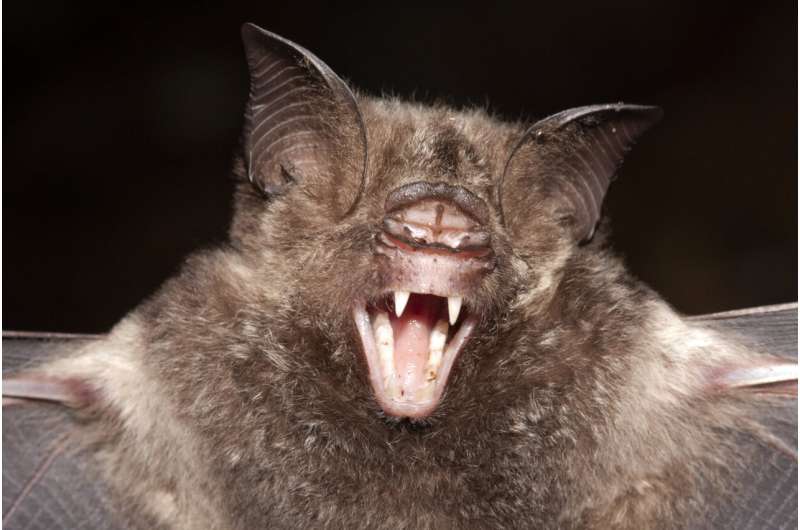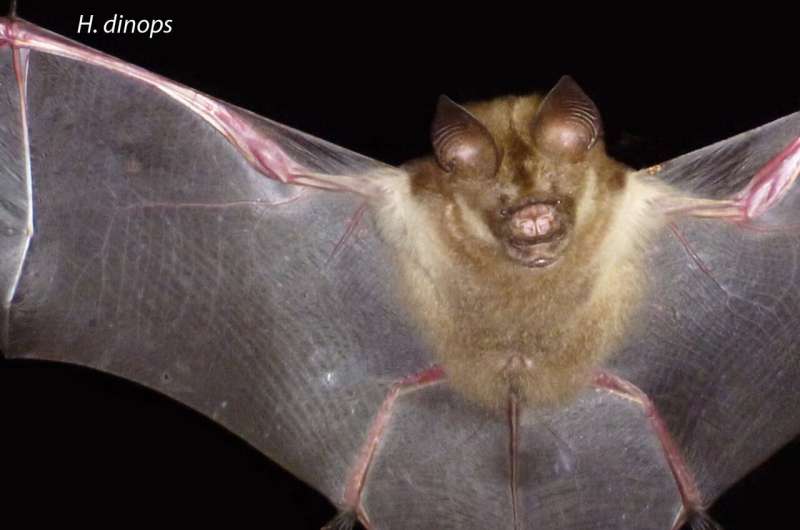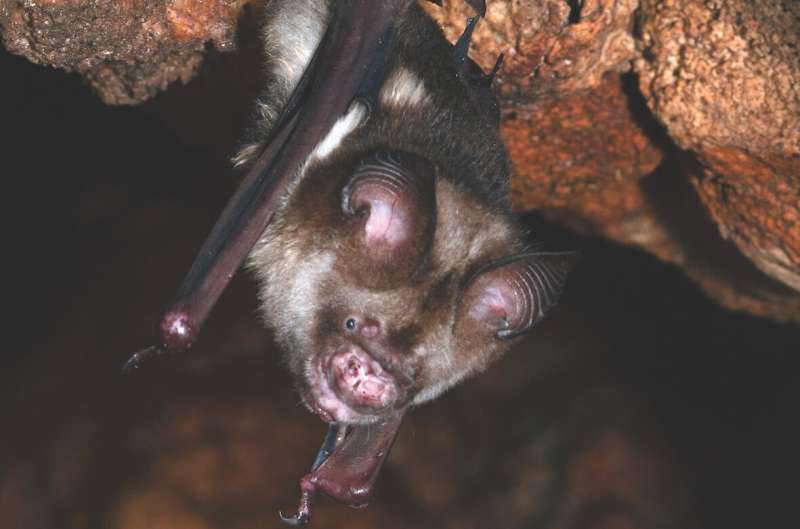This article has been reviewed according to Science X's editorial process and policies. Editors have highlighted the following attributes while ensuring the content's credibility:
fact-checked
peer-reviewed publication
trusted source
proofread
Same species, different sizes: Rare evolution in action spotted in island bats

A University of Melbourne researcher has spotted a rare evolutionary phenomenon happening rapidly in real time in bats living in the Solomon Islands.
Dr. Tyrone Lavery reports in a paper published in Evolution that two groups of leaf-nosed bats with vastly different body sizes that were thought to be separate species are an example of a rare type of parallel evolution. Parallel evolution is when different populations living in similar environments evolve similar features independently.
The smaller bat, Hipposideros diadema, is found across its six main islands and many smaller islands. It is also common in South East Asia, Papua New Guinea and parts of northern Australia. The much larger bats were named in 1905 as H. dinops, or Fierce Leaf-Nosed Bat, and are found only in the Solomon Islands. The two sizes live together on most islands, which all have similar forested habitat.
"Although they are very different sizes, the bats' DNA is very similar. They use very different sonar frequencies, they probably eat different food, and even when they live in the same cave together they don't interbreed. That is why no one has ever really questioned whether they were different species," Dr. Lavery said.
Dr. Lavery said despite their independent origins, each group of larger bats has evolved to look the same, averaging more than double the weight of the small bat. "Our research suggests the rapid and repeated evolution of larger bodied bats from smaller bats, each happening independently on separate islands," he said.

"When we created family trees using the bats' DNA, we found that what we thought was just one species of large bat in the Solomon Islands was actually a case where bigger bats had evolved from the smaller species multiple times across different islands."
This type of parallel evolution arising from separated populations of the same species has only been observed in action a few times before and is believed to be the first time it has been documented in real time in mammals.
Parallel evolution has been found in parts of the world when populations are geographically separated but live in similar environments—such as different islands or lakes. One common type of parallel evolution is convergent evolution. For example, thylacines and wolves are two separate species with different origins that evolved separately to look similar. But Dr. Lavery said it was rare to see two isolated populations of the same species go through the same evolutionary process.
"Something very strong is pushing or selecting for these big bats, and it is strong enough for it to happen multiple times on different islands. We think these larger bats might be evolving to take advantage of prey that the smaller bats aren't eating. Although they could probably interbreed, they don't for some reason," he said.
Across the islands, the sonar frequencies of larger bats are lower and suited to hunting bigger prey, while the smaller bats use a higher frequency. This probably means the larger bats are eating larger insects, or even frogs, Dr. Lavery said.

Measuring 103 bat specimens from the Australian Museum, Queensland Museum, University of Kansas Natural History Museum, and the Bernice Pauahi Bishop Museum in Hawaii, Dr. Lavery also found no overlap in body size between the two groups—the smaller "species" was always easily identified from the larger bats.
"Over time larger body size may have been part of behavioral and physical adaptations needed to hunt larger prey. This might mean the bigger and smaller bats no longer recognize each other as mates, and so they live separate lives."
Dr. Lavery said this parallel evolution pattern in leaf-nosed bats had been observed in Solomon Islands on Guadalcanal and in the Western Province, and more research was needed to see if the same pattern was repeated on other islands.
"We may think of evolution as very slow process, but it can happen rapidly when the conditions are right and two groups are separated and stop interbreeding. They can begin to evolve on different pathways," he said.
"Islands are famous for helping us to observe and understand the processes for how species evolve in real time. They're also places that are very vulnerable to the types of disturbance created by humans create. It's important that we look after these incredible landscapes in Solomon Islands before we lose these stories even before we find them."
More information: Tyrone H Lavery et al, Parallel evolution in an island archipelago revealed by genomic sequencing of Hipposideros leaf-nosed bats, Evolution (2024). DOI: 10.1093/evolut/qpae039
Journal information: Evolution
Provided by University of Melbourne



















